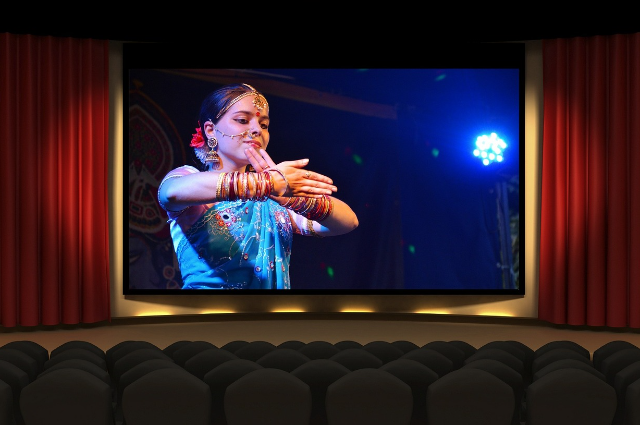
Film and cinema are widely used mass media that greatly impact perceptions, sway opinions, and uphold established cultural norms. By constructing an alternate reality, they provide audiences all over the world with entertainment and a means of escape from daily life. Furthermore, movies can change people's perspectives and contribute to the development of new social, cultural, and political ideals. Indian cinema has long played an important role in Indian culture, influencing both society and people's lives in different ways. Movies have a direct and indirect impact on people's speech, social behaviour, and fashion choices. From classic mythological films to "Bollywoodized" versions of popular Hollywood productions, Indian cinema has changed over time. Indian cinema started to take a more politically and socially conscious stance in the 1970s.
Particularly in Indian films, which have portrayed these themes since their inception, the way women are portrayed in movies reflects their status, image, and role in society. Numerous movies are based on religious and mythological themes, portraying women as models of morality and virtue who prioritize their husbands' loyalty and obedience. With films like Dahej (1950), Devi (1970), Pati Parmeshwar (1988), and Gauri (1968), which portray women as docile, subservient wives and martyrs for their families, Hindi cinema has successfully upheld patriarchal norms. According to research, women's representation in movies was a major issue in the 1960s and 1970s, drawing attention to criticism of their roles and portrayals in the motion picture business.
The representation of women in contemporary movies
The field of Indian filmmaking from the late 20th century to the present is referred to as contemporary Indian cinema. It displays the advancements in technology, culture, and society that occurred during this period. Indian cinema is known for its diversity and features films in Bengali, Telugu, Tamil, Hindi, and Malayalam, among other languages. The roles that women play in these movies and how they are portrayed have changed significantly in recent years. While the representation of women as mothers, daughters, wives, and daughters-in-law has remained mostly constant, there have been two significant changes, according to a recent study of popular Indian films from the 1940s to the 2000s. First of all, the 'other woman,' who is frequently portrayed as a dancing courtesan, has changed in representation.
Second, more and more women are portrayed in occupations and professional roles. Modern female characters are presented as independent and self-sufficient, in contrast to the women of the 1940s and 1950s who frequently depended on men.
As more women are pursuing careers that were previously unattainable for them, like investigative journalism, law enforcement, airline piloting, and business ownership, this is indicative of a larger shift in society. Women are increasingly playing the lead in contemporary films rather than just supporting parts as Indian society grows more accepting of dating, premarital sex, and gender equality. Nonetheless, a greater variety of prominent and varied representations of women have begun to appear in Indian cinema in recent years. Actresses like Rituparna Sengupta, Anushka Shetty, Vidya Balan, Kangana Ranaut, and Priyanka Chopra have embraced roles that challenge industry stereotypes in the twenty-first century.
Examining the psychological viewpoint that underlies the change
According to psychologist Albert Bandura, people pick up behaviours from the people around them. The way women are portrayed in movies has the power to change attitudes and shape society's perceptions of gender roles. The way society views female-focused roles in movies is changing. India, a nation renowned for its diverse culture, is seeing a change in how women are portrayed in media and movies as symbols of strength, which helps to change the cultural narrative of the nation. Male protagonists in recent commercial films have come under fire for acting inappropriately, including making sexually suggestive comments, harassing, stalking, eve-teasing, making unwanted physical contact, and attempting to undress women.
The male lead in these Indian films persistently pursues the female character until she finally yields, even if she consistently turns down advances. Although there are issues with this portrayal and it is not a good example for either gender, it also mirrors how men have historically courted women in classical literature. Introspection and personal growth have a big impact on one's identity and self-concept. A person's perception of themselves is greatly influenced by media, especially movies. A stronger sense of self-worth and empowerment for women is fostered by films like "Piku," "Queen," "Mardani," and "Neerja," which feature strong and independent female leads addressing a variety of themes and issues.
With the rise of female writers and filmmakers in the twenty-first century, the portrayal of women in Indian cinema has changed. As a result, more material that presents a fresh viewpoint on women's evolving lives is being created.
Conclusion
It is important to acknowledge and address persistent problems like pay parity that still exist in the industry, even though progress has been made and the audience has generally become more receptive to change. There is still a sizable pay disparity that impacts many female actors. The emergence of streaming services like Netflix and Amazon Prime has opened up new avenues for unusual themes, which will eventually change how the movie business makes money. The current era of Indian cinema is exciting, especially for women in the industry!
